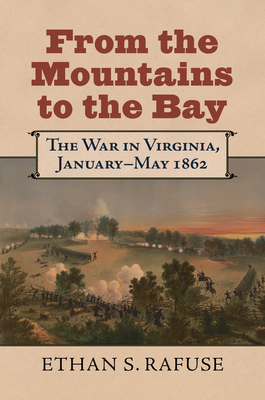
Part of Series
Continuing his magisterial account of the Eastern Front campaigns, the writer cited by The Atlantic as "indisputably the West's foremost expert on the subject" focuses here on the Red Army's operations from the fall of 1942 through the April 1944. David M. Glantz chronicles the Soviet army's efforts to further exploit their post-Kursk gains and accelerate a counteroffensive that would eventually take them all the way to Berlin. The Red Army's Operation Bagration that liberated Belorussia in June 1944 sits like a colossus in the annals of World War II history. What is little noted in the history books, however, is that the Bagration offensive was not the Soviets’ first attempt. Battle for Belorussia tells the story of how, eight months earlier, and acting under the direction of Stalin and his Stavka, three Red Army fronts conducted multiple simultaneous and successive operations along a nearly 400-mile front in an effort to liberate Belorussia and capture Minsk, its capital city. The campaign, with over 700,000 casualties, was a Red Army failure. Glantz describes in detail the series of offensives, with their markedly different and ultimately disappointing results, that, contrary to later accounts, effectively shifted Stalin’s focus to the Ukraine as a more manageable theater of military operations. Restoring the first Belorussian offensive to its place in history, this work also reveals for the first time what the later, successful Bagration operation owed to its forgotten precursor.
Author

David M. Glantz is an American military historian and the editor of The Journal of Slavic Military Studies. Glantz received degrees in history from the Virginia Military Institute and the University of North Carolina at Chapel Hill, and is a graduate of the U.S. Army Command and General Staff College, Defense Language Institute, Institute for Russian and Eastern European Studies, and U.S. Army War College. He entered active service with the United States Army in 1963. He began his military career in 1963 as a field artillery officer from 1965 to 1969, and served in various assignments in the United States, and in Vietnam during the Vietnam War with the II Field Force Fire Support Coordination Element (FSCE) at the Plantation in Long Binh. After teaching history at the United States Military Academy from 1969 through 1973, he completed the army’s Soviet foreign area specialist program and became chief of Estimates in US Army Europe’s Office of the Deputy Chief of Staff for Intelligence (USAREUR ODCSI) from 1977 to 1979. Upon his return to the United States in 1979, he became chief of research at the Army’s newly-formed Combat Studies Institute (CSI) at Fort Leavenworth, Kansas, from 1979 to 1983 and then Director of Soviet Army Operations at the Center for Land Warfare, U.S. Army War College in Carlisle, Pennsylvania, from 1983 to 1986. While at the College, Col. Glantz was instrumental in conducting the annual "Art of War" symposia which produced the best analysis of the conduct of operations on the Eastern Front during the Second World War in English to date. The symposia included attendance of a number of former German participants in the operations, and resulted in publication of the seminal transcripts of proceedings. Returning to Fort Leavenworth in 1986, he helped found and later directed the U.S. Army’s Soviet (later Foreign) Military Studies Office (FMSO), where he remained until his retirement in 1993 with the rank of Colonel. In 1993, while at FMSO, he established The Journal of Slavic Military Studies, a scholarly journal for which he still serves as chief editor, that covers military affairs in the states of Central and Eastern Europe as well as the former Soviet Union. A member of the Russian Federation’s Academy of Natural Sciences, he has written or co-authored more than twenty commercially published books, over sixty self-published studies and atlases, and over one hundred articles dealing with the history of the Red (Soviet) Army, Soviet military strategy, operational art, and tactics, Soviet airborne operations, intelligence, and deception, and other topics related to World War II. In recognition of his work, he has received several awards, including the Society of Military History’s prestigious Samuel Eliot Morrison Prize for his contributions to the study of military history. Glantz is regarded by many as one of the best western military historians of the Soviet role in World War II.[1] He is perhaps most associated with the thesis that World War II Soviet military history has been prejudiced in the West by its over-reliance on German oral and printed sources, without being balanced by a similar examination of Soviet source material. A more complete version of this thesis can be found in his paper “The Failures of Historiography: Forgotten Battles of the German-Soviet War (1941-1945).” Despite his acknowledged expertise, Glantz has occasionally been criticized for his stylistic choices, such as inventing specific thoughts and feelings of historical figures without reference to documented sources. Glantz is also known as an opponent of Viktor Suvorov's thesis, which he endeavored to rebut with the book Stumbling Colossus. He lives with his wife Mary Ann Glantz in Carlisle, Pennsylvania. The Glantzes' daughter Mary E. Glantz, also a historian, has written FDR And The Soviet Union: The President's Battles Over Forei


